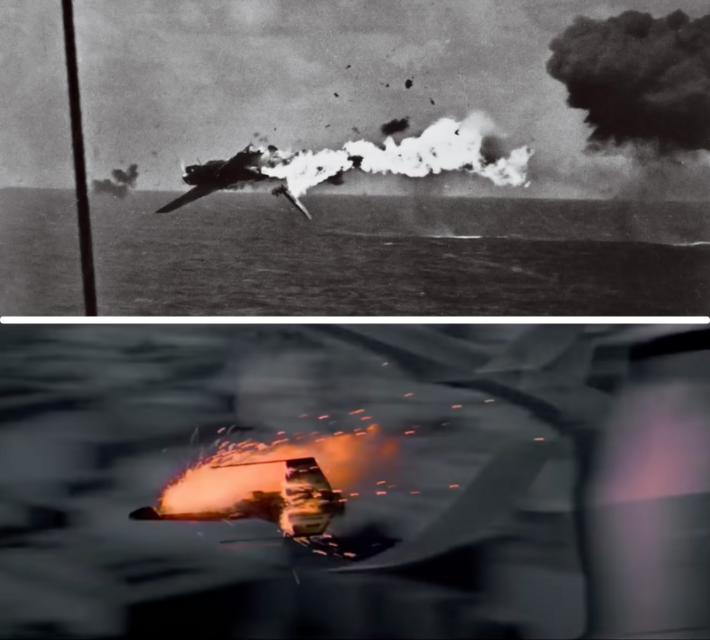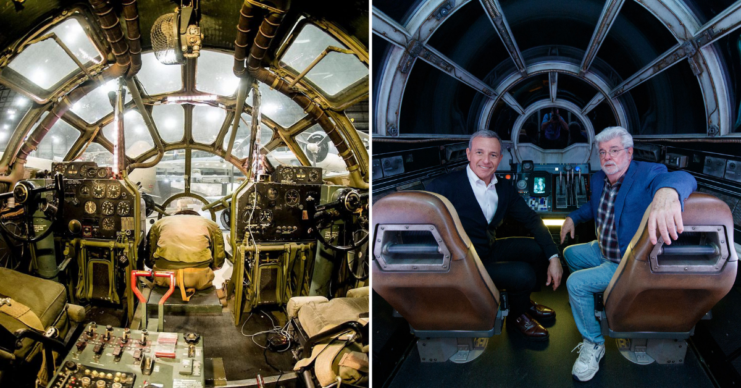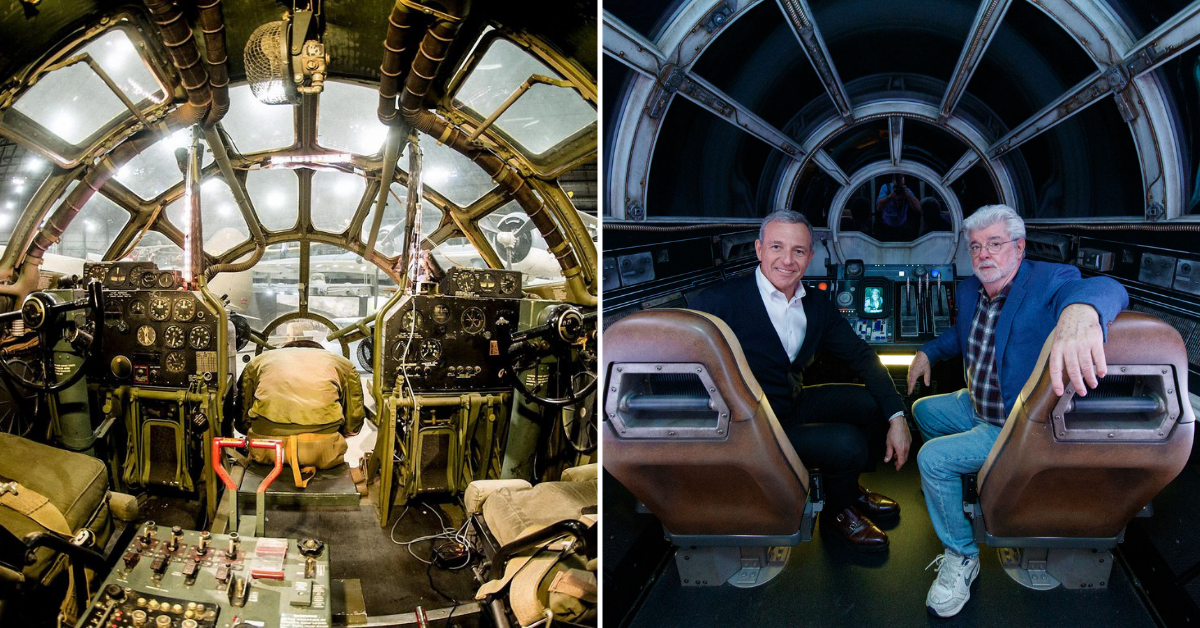In 1977, film director George Lucas showed fellow friends in the industry an unfinished cut of a project he’d been working on. What they watched was a strange, jumbled mess of scenes that took the viewer to a futuristic spaceship in one moment, to WWII footage of an intense dogfight or kamikaze attack the next. The viewers were left confused and amused at Lucas’ movie and gave him some scathing criticism. However, one viewer, director Steven Spielberg, saw the film’s potential. The movie they saw was the 1977 Star Wars.
The movie they watched was an incredibly rough cut that lacked any complete special effects. Because of this, Lucas used placeholder footage that diced up the natural flow of the movie with jarring transitions between scenes. Much of this footage came from WWII recordings, depicting dramatic aerial battles, but this left the viewers confused at what they were watching.
“So one second you’re with the Wookiee in the spaceship and the next you’re in The Bridges at Toko-Ri,” screenwriter Willard Huyck said about the weird experience.
Using WWII footage
Lucas collected hours of wartime film that he wanted to replicate in his own futuristic universe. While it may have looked strange to his friends, Lucas was actually using the footage as guides for the movie’s visual effects (VFX) crews. In one of the clips, U.S. fighters peeled off from a formation in a WWII newsreel. This same clip would be replicated by the VFX team when Rebel X-wings dropped out of formation one-by-one to attack the Death Star.
About a minute later, an X-wing is destroyed by anti-aircraft fire from the Death Star. This shot was recreated from dramatic footage of a U.S. Navy cameraman who filmed the very moment an incoming kamikaze’s aircraft was destroyed and engulfed in flames.

VFX artist Paul Huston explained in his book, Star Wars Storyboards: The Original Trilogy, that “[An artist] would show me a shot of a Japanese Zero flying left to right in front of a conning tower of an aircraft carrier and say, ‘The aircraft carrier is the Death Star, the Zero is an X-wing. Do a board like that.'”
It wasn’t just WWII battles that influenced George Lucas, as shots from movies like The Dam Busters and 633 Squadron helped craft some of Star Wars‘ most famous scenes. 633 Squadron showed RAF de Havilland Mosquitos make their way through a Norwegian fjord, dodging and weaving through anti-aircraft fire to destroy a German rocket fuel facility. This was a heavy influence on the Star Wars “trench run” scene.
Real-life aircraft inspired Star Wars spacecraft
Even the spacecraft themselves were based on real-world machines. The X-wing was a fast, modern, high-performance spacecraft, while the Y-wings were older and had been modified to keep up with newer models. The two operated as a team in a similar way to the Supermarine Spitfire and Hawker Hurricane did in the Battle of Britain; the more modern, romanticized, and beloved Spitfire took the center stage while the less glamorous Hurricane acted as the rough and ready workhorse.
This recreation actually had similar real-life effects, as people’s perception of the X-wing and Y-wing actually mirrored that of the WWII aircraft. Most people think fondly of the Spitfire and X-wing but forget about the Hurricane and Y-wing.
The use of the Y-wing is similar to the Republic P-47 Thunderbolt, a large and heavy WWII fighter. This aircraft was incredibly powerful, but its large size and mass made it a rather poor dogfighter. Instead, it was increasingly put to use against ground targets, where its great durability and armaments allowed it to excel.
Aircraft on these missions would often return home covered in mud, soot, and missing pieces. The Y-wing is also known for its durability and payload, and is similar in appearance and usage to a fighter-bomber.
The Millennium Falcon has many nods to classic WWII aircraft too, most notably with the “greenhouse” glass surrounding the cockpit. This was modeled from the Boeing B-29’s Superfortress’ distinct nose.

In many ways, the Millennium Falcon is much more of a bomber compared to the Star Wars universe’s smaller spacecraft, with its large size and payload, as well as gun turrets, which were famous on aircraft like the B-17 and B-29. Its exhausts streak black stains across its skin much like the dirty and well-used aircraft of WWII.
More from us: Fascinating Facts About ‘Platoon’ — Oliver Stone’s Best Movie
The B-29 was cutting edge when it entered service, and for many, it represented the future. It is fitting then that this aircraft inspired the Millennium Falcon.
The WWII themes and influences that made their way into Star Wars may have contributed to the film’s enormous success. The film pits the good guys versus the bad guys, and like WWII, the good guys won in the end.
